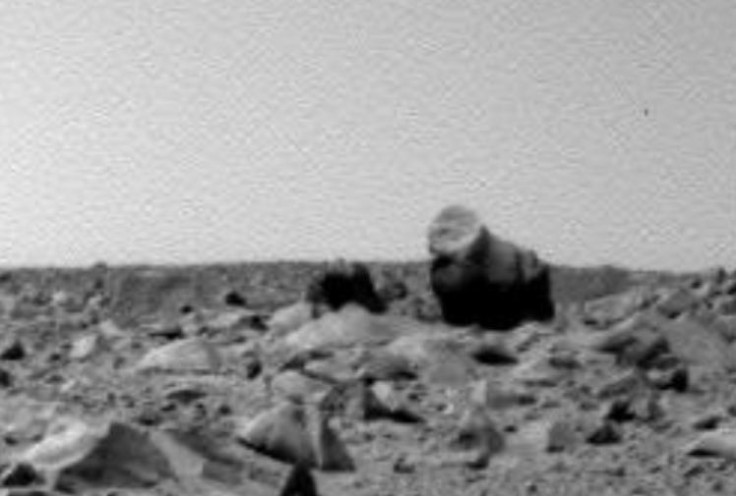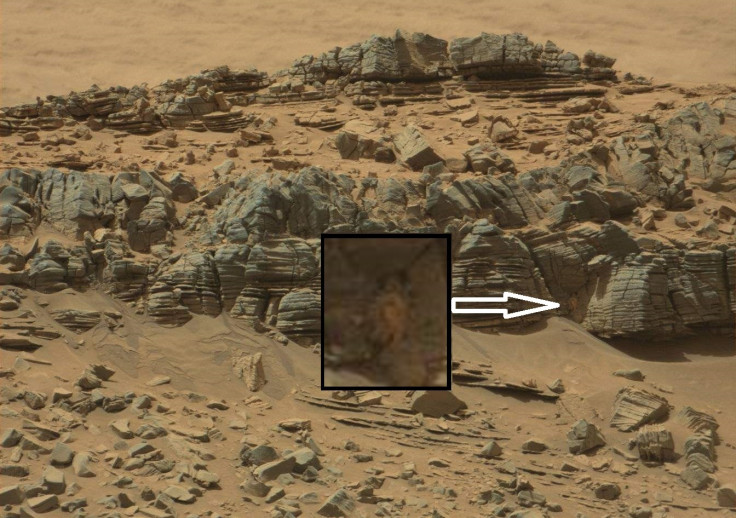Mars: Gorilla and infant follows crab and lizard as latest 'discoveries' by Curiosity Rover

A photograph taken on the surface of Mars by Nasa's Curiosity Rover has gone viral after what looked like a gorilla and her infant were spotted in a corner of the image. The claim is just the latest in a long line of strange creatures and objects to be "spotted" on the surface of the Red Planet, others including a pyramid, giant crab, coffin and even part of a car.
On YouTube, someone calling himself "Mister Enigma" claims: "When we zoom in we can see what looks like a gorilla or bear-type creature or maybe even a statue of a creature. But what is even more odd is that right next to it on the left we see what looks like a smaller creature like a baby or cub. I know it sounds crazy, but just look at them. Nothing else in the picture looks at all similar."

Mister Enigma has helpfully coloured in the relevant objects to make them stand out - or, if you were being cynical, to make them look more like gorillas. Other Mars-watchers disagreed, saying the shapes looked more like camels. The comments section beneath the original video is now disabled - doubtless adding fuel to the fire for conspiracy theorists. Mister Enigma isn't the only one claiming to have found living creatures on Mars. Some believe Nasa purposefully puts out black and white images so people can't see how green the so-called Red Planet really is.
Alien-hunters scrutinise the images sent back by Curiosity at online channel ArtAlienTV. Other creatures it is claimed have been seen include lizards, mice, penguins and rabbits. One theory doing the rounds is that Nasa is secretly planting life on Mars to see if it will survive but can't reveal the truth because it is scared of animal rights groups like PETA.
Although some of the mysterious shapes do indeed appear to resemble familiar ones, it is probably due to a trick of the mind called pareidola - seeing faces and familiar shapes in unfamiliar ones. The mechanism was evolved to keep humans safe in hostile environments such as jungles and mountains - and perhaps, one day, on Mars.
© Copyright IBTimes 2025. All rights reserved.






















